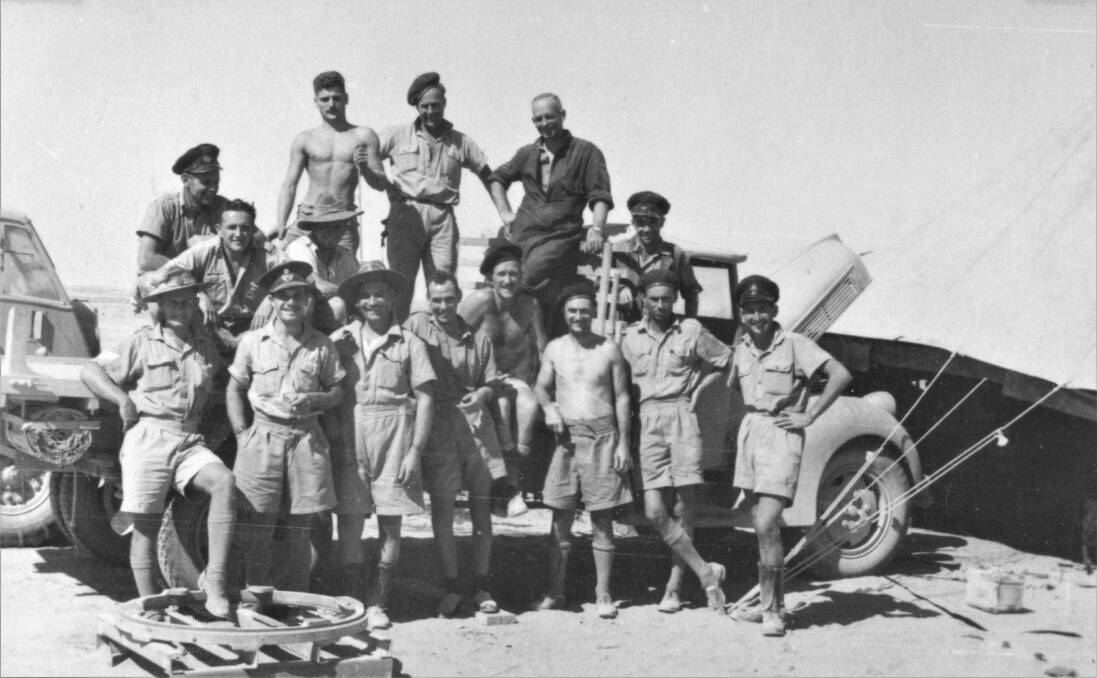
OUR historic photo this week shows a group of Royal Air Force and Royal Australian Air Force ground crew at Sidi Haneish airfield in Egypt during the Second World War. The Australian air crews and pilots were taking part in the Western Desert Campaign.
This image and some 2000 other images are on show at the Bathurst Remembers World War Two Exhibition 2022, marking VJ Day and the end of World War Two.
Subscribe now for unlimited access.
$0/
(min cost $0)
or signup to continue reading
Monday (August 15) is the last day for the exhibition, which will be open until 5pm at the Bathurst Showground if you have not already visited.
Entry is by donation and patrons are encouraged to take advantage of this historic military event.
The exhibition consists of Snapshots of World War Two - more than 600 enlarged photos of soldiers in action, on the battlefields, training, on the home front, at Bathurst Army Camp, etc.
There is also the Wall of Valour, which consists of more than 130 enlarged photos of servicemen and servicewomen with an association with Bathurst who enlisted and served.
Guest exhibitors are displaying more than 4000 military items and memorabilia, uniforms and helmets; there is a large display by the Military Vehicle Group of NSW and other vehicle restoration groups; there are war medals, RAAF and prisoner of war items; newspapers of the day; and the Damien Parer St Stanislaus' College photo display.
Several groups of military re-enactors will be marching around and staying in their camps.
The Australian War Memorial in Canberra has sent a Memorial Box to Bathurst for the four days of the exhibition. The box is full of items for schoolchildren to examine.
The ground crew supported the British and Aussie pilots at Sidi Haneish airfield in the Western Desert - one of a number of makeshift airfields used in Egypt in North Africa during World War Two.
The airfield and camp were around 235 miles west-northwest of Cairo.
The men lived in tents or under their trucks in the desert. Some stays could be as short as a week or two. The conditions were difficult: temperatures were often freezing overnight and sweltering during the day, where the men were without shirts.
The men had few spare parts, so they would scavenge parts from crashed aircraft from both sides.
They had a makeshift crane attached to one of the vehicles that could lift the wrecked aircraft onto a truck.
Sometimes the men would work through the night to get enough planes in the air.
Conditions were pretty primitive on occasions, but usually the men had a mess tent where meals were cooked by airforce cooks and served up to the men at all hours of the day and night.
The nearest village, Mersa Matruh, was about 20 miles away, where the airmen bought fresh vegetables for their mess.
The main source of fresh water were the Roman aqueducts at Mersa Matruh, though the British later established a distillation plant there to increase their water supply.
One of the most audacious raids of World War Two took place on the night of July 26, 1942, just as the outcome of that conflict hung in the balance.
A convoy of 18 Allied jeeps carrying Special Air Service personnel appeared out of the early morning darkness and drove onto the German-held landing strip at Sidi Haneish.
Within the space of a few savage minutes, 18 German and Italian aircraft were ablaze, a dozen more were damaged and scores of guards lay dead or wounded.
The men responsible for the raid then vanished into the night as swiftly as they had arrived, prompting the Germans to dub the enemy Special Air Service leader, David Stirling, as The Phantom Major.

